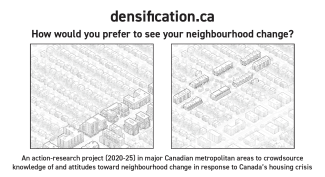Speakers:
Conrad Speckert (he/him)
Conrad is an intern architect at LGA Architectural Partners in Toronto with degrees from McGill University and the University of Waterloo. His thesis project proposed a building code change to allow for single stair residential buildings up to six storeys and has since evolved into a CMHC Balanced Supply of Housing research project to change the National Building Code of Canada. He has a passion for building code and zoning reforms to address housing supply and joined LGA as project manager for ‘ReHousing the Yellowbelt,’ a collaboration with the University of Toronto to study the gentle densification of existing neighbourhoods. He previously worked for architects in Toronto, Vancouver, Berlin, and Tokyo, becoming well-versed in the design of “missing middle” and mid-rise residential buildings.
Conrad is also an occasional guest speaker at the Canadian Home Builder’s Association on gentle densification and building code issues.
Nik Luka (he/his/ il/lui)
Nik Luka is an ethnographer specialised in housing, social practice, and landscape studies. With a dual background in architecture and urban planning as well as a doctorate in cultural geography, he works in close collaboration with civil-society organisations and state agencies on coproduction through community-based design. Over the last 25 years his activities have broadly focused on the deliberate policy-led remaking of everyday space through what is known in German as Stadtumbau (literally the reworking of cities and suburbs). Current undertakings include a SSHRC Partnership Grant with colleagues across Canada on how to strategically address the housing crisis, an action-research project (also funded by SSHRC) on commoning and coproduction of public space focusing on Montréal’s Champ des Possibles, and several EU-funded projects with colleagues in Sweden, Switzerland, France, and the low countries seeking to conjugate densification, policy impulses to transit-oriented development, and context-responsive landscape strategies in postsuburban and periurban contexts.
Resources:

